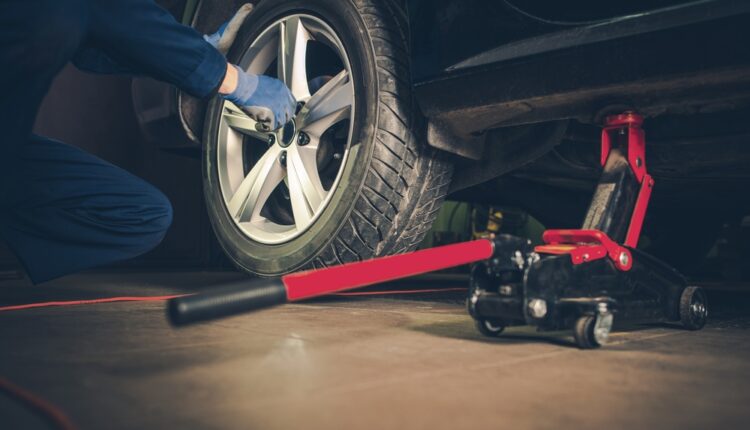How and When to Replace a Car Tyre – Guide
Your car’s tyres are the only point of contact between your vehicle and the road, making them critical for safety, performance, and efficiency. Knowing how and when to replace a car tyre is essential to ensure optimal driving conditions and avoid accidents caused by worn or damaged tyres. This guide will walk you through the signs that indicate it’s time to replace a car tyre and how to do it properly.
Why is it Important to Replace a Car Tyre
Tyres are responsible for maintaining grip, supporting your vehicle’s load, and absorbing shocks from the road. Over time, they wear out due to friction, heat, and environmental factors. Driving on worn-out or damaged tyres can lead to poor handling, reduced braking performance, and increased risk of blowouts, compromising your safety.
When to Replace Your Car Tyres
Inspect Tire Tread Depth
The depth of your tyre tread is crucial for maintaining grip, especially on wet or slippery surfaces. Most tyres have tread wear indicators, which are small bars of rubber located within the grooves. If the tread has worn down to these indicators, it’s time to replace the tyres.
In general, a tread depth below 2/32 of an inch (1.6 mm) is considered unsafe. You can check this with a tread depth gauge or the “penny test.” Insert a coin into the tread groove; if the top of the figure on the coin is visible, the tread is too shallow.
Check for Physical Damage
Cracks, bulges, cuts, or punctures in your tyres are warning signs. A bulge on the sidewall, for instance, indicates internal damage and increases the risk of a blowout. If you notice any of these issues, have the tyre inspected and replaced immediately.
Age of the Tire
Even if your tyres appear to be in good condition, they degrade over time. Most manufacturers recommend replacing tyres every five years, depending on the brand and type of tire. Check the manufacturing date stamped on the tire’s sidewall, indicated by a four-digit code (e.g., 3025 means it was made in the 30th week of 2025).
Uneven Wear Patterns
Uneven tread wear can result from improper alignment, unbalanced wheels, or underinflated/overinflated tyres. If you notice uneven wear, it’s a sign that replacement is needed, and the underlying issue should also be addressed.
Frequent Air Pressure Loss
If your tyre is losing air pressure more frequently than usual, it could indicate internal damage or a slow leak. In such cases, replacement may be more cost-effective than frequent repairs.
How to Replace a Car Tyre
1. Prepare Your Tools
Before starting, ensure you have the necessary tools:
- A spare tyre (properly inflated)
- A car jack
- A lug wrench
- Wheel wedges or blocks
- Gloves for safety
2. Park Safely
Park your car on a flat, stable surface away from traffic. Engage the parking brake and place wheel wedges behind the tyres to prevent movement.
3. Loosen the Lug Nuts
Using the lug wrench, slightly loosen the lug nuts on the tyre that needs to be replaced. Do not remove them completely at this stage.
4. Lift the Car
Position the car jack under the appropriate jacking point (refer to your owner’s manual). Raise the vehicle until the tyre is off the ground.
5. Remove the Tyre
Fully unscrew the loosened lug nuts and remove the damaged or worn tyre.
6. Mount the Spare Tyre
Align the spare tyre with the wheel bolts and hand-tighten the lug nuts.
7. Lower the Car
Use the jack to lower the vehicle back to the ground. Tighten the lug nuts in a star pattern to ensure even pressure is applied.
8. Check and Adjust
After mounting the spare, check the tyre pressure to ensure it is within the recommended range.
Tips for Extending Tire Life
- Maintain Proper Tyre Pressure: Check your tyre pressure monthly and adjust it according to your car’s specifications.
- Rotate tyres regularly: Rotate your tyres every 5,000 to 8,000 kilometers to ensure even wear.
- Perform Regular Alignments: Misaligned wheels cause uneven tyre wear. Have your alignment checked periodically.
- Avoid Overloading: Excessive weight increases strain on your tyres and accelerates wear.
Conclusion
Knowing when and how to replace your car tyres is essential for your safety and the performance of your vehicle. Regular inspections, proper maintenance, and timely replacements can help prevent unexpected breakdowns and accidents. If you’re unsure about the condition of your tyres, consult a professional for advice. By staying proactive, you can ensure a smooth and safe driving experience.

